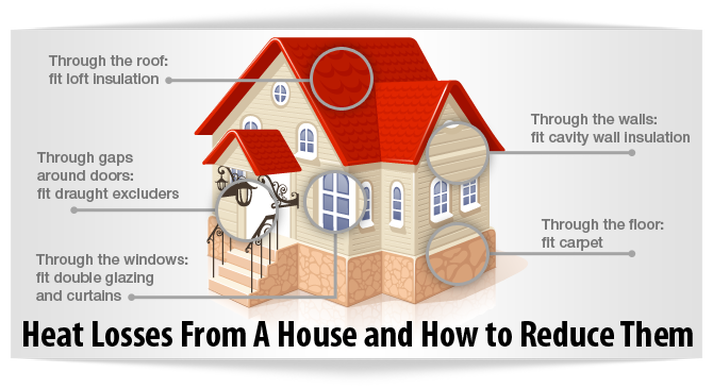Older homes exude a charm that modern constructions often struggle to replicate as the years pass. However, one common challenge homeowners face in older houses is maintaining a comfortable and energy-efficient living space, especially during colder seasons. At Templum Construction, we believe that a well-informed approach to home assessments can significantly enhance the heat retention capabilities of older homes. In this article, we’ll explore the top five strategies to keep the warmth in, making your vintage abode cozy and efficient.
1. Evaluate and Upgrade Insulation
Insulation is the backbone of a home’s thermal efficiency. In older houses, insulation materials might have deteriorated or become less effective over time. Conducting a thorough assessment to identify areas with insufficient or degraded insulation is crucial. Common problem areas include attics, crawl spaces, and exterior walls.
Upgrading insulation not only helps in retaining heat but also contributes to energy savings. Modern insulation materials, such as fiberglass, cellulose, or spray foam, offer improved thermal resistance. Proper insulation ensures that your home stays warm in winter and cool in summer, providing year-round comfort.
2. Address Drafts and Air Leaks
Drafts and air leaks are common culprits when it comes to heat loss in older homes. Small gaps around windows, doors, and other openings can allow cold air to infiltrate and warm air to escape. Conduct a meticulous inspection to identify these points of weakness.
Sealing drafts and air leaks is a cost-effective measure that can significantly impact heat retention. Weatherstripping, caulking, and using draft stoppers for doors are effective ways to eliminate gaps. This not only enhances the thermal efficiency of your home but also contributes to a quieter and more comfortable living environment.
3. Upgrade Windows and Doors
Windows and doors are key components in a home’s defense against temperature fluctuations. Older homes often feature single-pane windows and poorly insulated doors that contribute to heat loss. Upgrading to energy-efficient windows and doors can make a substantial difference.
Double or triple-pane windows with low-emissivity coatings reduce heat transfer, keeping your home warmer in winter and cooler in summer. Additionally, consider investing in insulated doors with weatherstripping to minimize heat exchange. Not only do these upgrades enhance thermal performance, but they also contribute to noise reduction and increased security.
4. Install a Programmable Thermostat
Modern technology offers homeowners innovative tools to manage their home’s temperature more efficiently. Installing a programmable thermostat is a smart investment that allows you to set specific temperatures for different times of the day, optimizing energy usage.
Programmable thermostats can be programmed to lower the temperature when you’re away or asleep and increase it when you’re at home and awake. This ensures that you’re only using energy when necessary, leading to both cost savings and improved heat retention. Some advanced models even learn your preferences over time, adapting to your lifestyle for maximum comfort.
5. Consider Radiant Heating Systems
While many older homes rely on forced-air heating systems, exploring alternative heating solutions can be beneficial. Radiant heating systems, such as underfloor or radiant panels, distribute heat more evenly and efficiently than traditional methods.
Underfloor heating, in particular, eliminates the need for bulky radiators and provides a constant, gentle warmth. While the initial installation cost may be higher, the long-term benefits of energy efficiency and comfort make radiant heating systems an appealing option for older homes.
Enhancing the heat retention capabilities of older homes requires a holistic approach that addresses insulation, air leaks, windows, doors, and heating systems. Conducting a comprehensive home assessment is the first step toward creating a more comfortable and energy-efficient living space. At Templum Construction, we believe in empowering homeowners with the knowledge and tools to transform their older homes into cozy sanctuaries. By implementing these top five strategies, you make your home warmer and contribute to a more sustainable and cost-effective living environment. Embrace the warmth, and let your vintage home stand the test of time with improved thermal efficiency.



